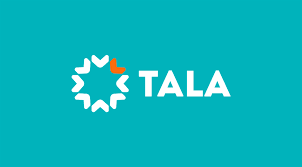
For over 10 years, microlending fintech Tala has been in business without ever turning a profit. Yet, instead of slowing down, the company is doubling down on growth. It is pushing into six new countries, betting that revamped technology and a faster expansion model will finally help it break even by early 2026. The big question is whether this Silicon Valley-style gamble—growth before profit—will pay off.
Eleven Years of Losses, One Big Goal
Since its founding in 2011, Tala has lent $7 billion to low-income consumers in countries like Kenya, the Philippines, and Mexico. But the business of issuing microloans—often just $20 to $500—to people earning $5,000 to $15,000 a year is notoriously hard to make profitable. Defaults are high (about 10%), costs per loan are significant, and investor skepticism is common.
Despite this, Tala says revenue is rising, it is now at a $340 million annualized run rate. CEO Shivani Siroya insists the company could have been profitable years ago if it slowed growth, but the mission has always been to scale.
Betting on New Technology
Tala’s big hope lies in a new underwriting system built under its CTO, Kelly Uphoff, a former Netflix data leader. The platform replaces Tala’s crude “credit score buckets” with personalized risk assessments. It uses causal inference techniques and new data sources, such as how customers use Tala’s app or whether they rush through applications, to gauge repayment ability.
The results are promising. In Mexico, where the system was first deployed, loan approvals jumped from 40% to 80%, while defaults actually fell for similar risk groups. In addition, Tala says it can now design lending systems for new countries in three months instead of twelve, a breakthrough that underpins its expansion strategy.
Expanding to Six New Countries
This year, Tala entered Guatemala, its fourth market. Over the next three to six months, it plans to launch in the Dominican Republic, Panama, Peru, Vietnam, and India. That’s a sharp acceleration considering the fact that it has only operated in three countries in the last decade.
The choice of markets follows a clear pattern, that is, nations with large, underserved populations whose income levels mirror those of Tala’s existing customers. With its new tech, Tala claims it can double lending volumes by 2027 while scaling responsibly.
Competitors and the Growth-First Model
Tala isn’t alone in prioritizing growth over profits. US fintechs like Affirm and SoFi pursued similar paths, achieving profitability years after launching. On the other hand, rivals like Branch, another microloan provider active in Africa and India, took a more conservative route. Branch tightened spending during the pandemic, adopted a profitability-first mindset, and now expects $20 million in net profit in 2025.
This contrast highlights Tala’s gamble. While competitors show that microloans can be profitable, Tala is racing to expand before rivals or large tech firms with advanced tech and AI capabilities surpass it
Botton Line
With its improved tech, faster market-entry model, and bold expansion to six new countries, Tala is chasing a long-awaited milestone of profitability by 2026. But its future rests on whether borrowers keep paying, regulators tolerate its high rates, and investors stay patient. For now, Tala remains one of fintech’s boldest and riskiest experiments.







